Wichita Falls, TX Pollen and Allergy Report for Summer 2023
Pollen Allergy Trends in Wichita Falls, TX
When is pollen lowest in Wichita Falls, TX?

February
Lowest month total PPM
Avg. PPM
When is pollen highest in Wichita Falls, TX?

March
Highest month total PPM
Avg. PPM
How does pollen in Wichita Falls, TX compare to Texas?
Wichita Falls has a lower average PPM than the state of Texas.
Wichita Falls yearly avg PPM:
Texas yearly avg PPM:
How does pollen in Wichita Falls, TX compare to the USA?
Wichita Falls has a higher average PPM than the USA.
Wichita Falls yearly avg PPM:
USA yearly avg PPM:
Is pollen worse this year in Wichita Falls, TX?
Spring 2023 was worse than spring 2022.
Spring 2023 PPM:
Spring 2022 PPM:
Average PPM in Wichita Falls, TX
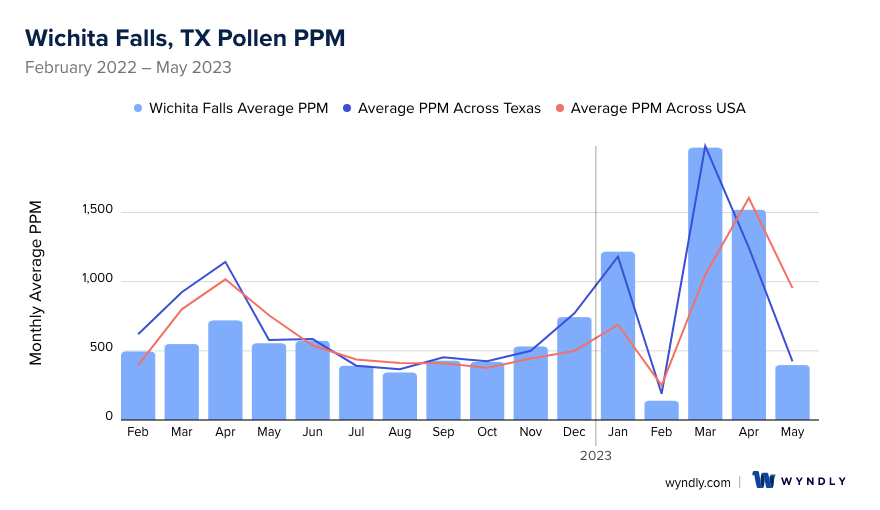
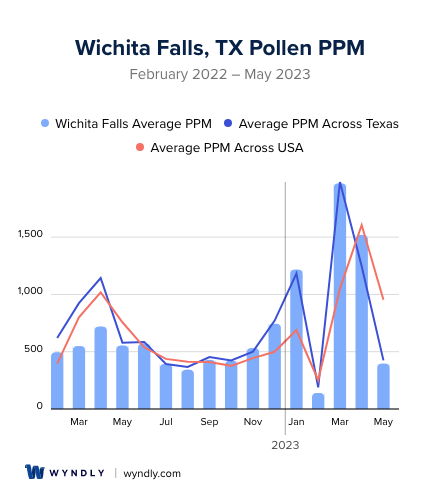
Wichita Falls, TX Pollen and Allergy Breakdown by Month
Grass
When is grass pollen highest in Wichita Falls, TX?
February has the highest grass pollen in Wichita Falls, TX with an average PPM of
When is grass pollen lowest in Wichita Falls, TX?
December has the lowest grass pollen in Wichita Falls, TX with an average PPM of
Tree
When is tree pollen highest in Wichita Falls, TX?
March has the highest tree pollen in Wichita Falls, TX with an average PPM of
When is tree pollen lowest in Wichita Falls, TX?
July has the lowest tree pollen in Wichita Falls, TX with an average PPM of
Weed
When is weed pollen highest in Wichita Falls, TX?
December has the highest weed pollen in Wichita Falls, TX with an average PPM of
When is weed pollen lowest in Wichita Falls, TX?
February has the lowest weed pollen in Wichita Falls, TX with an average PPM of
Wichita Falls, TX Pollen Monthly Breakdown by Pollen Type

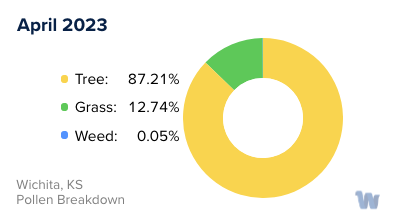
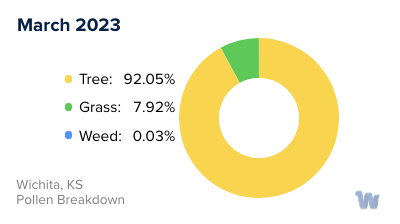
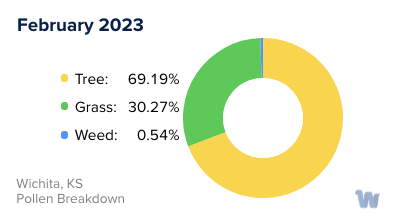
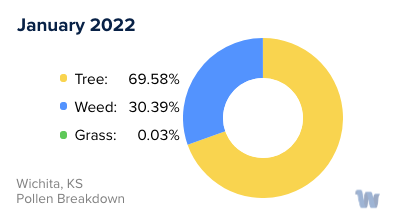
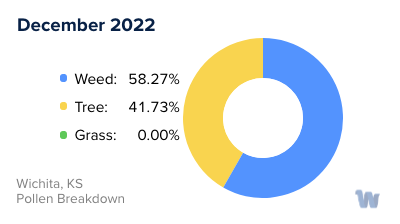
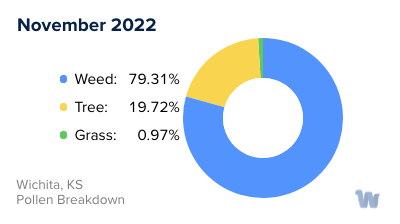
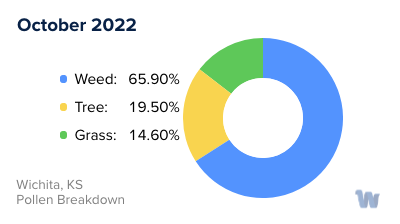
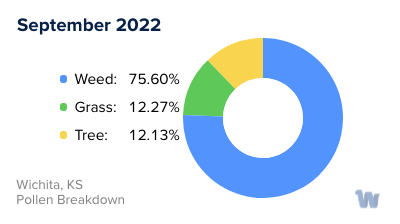
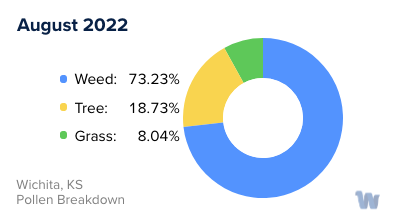
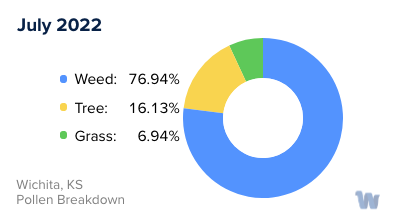
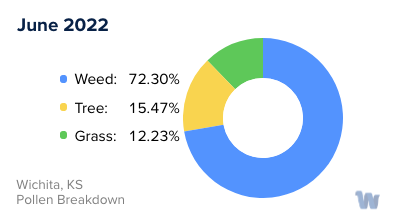

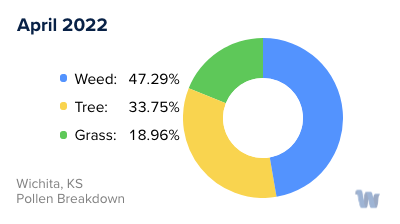
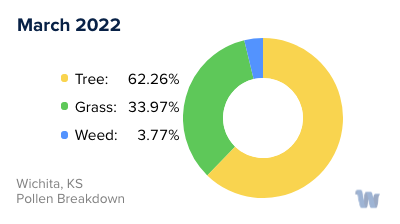
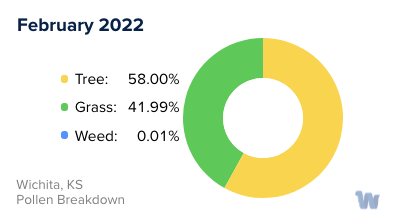
Pollen and Hay Fever in Wichita Falls, TX
In the picturesque city of Wichita Falls, Texas, the changing seasons bring a multitude of colors and fragrances to the landscape. However, for those with pollen allergies, this natural beauty can come with a sneeze or two. Pollen allergies, often referred to as hay fever or allergic rhinitis, are an immune response to the fine powders released by trees, grasses, and weeds. In Wichita Falls, the varying climate throughout the year means that different types of pollen are prominent in different seasons.
As spring awakens, tree pollen takes center stage. Between March and May, residents may notice an increase in symptoms such as sneezing, itchy eyes, and a runny nose. Oak, cedar, and elm are some of the common trees in Wichita Falls that contribute to the surge in pollen levels.
As the warm embrace of summer rolls in, grass pollen starts to rise. From May to July, Bermuda grass, Kentucky bluegrass, and Timothy grass release pollen into the air. The wide-open spaces around Wichita Falls, with their lush green meadows, can be a source of discomfort for those sensitive to grass pollen.
Finally, as the leaves begin to turn in the fall, weed pollen takes the baton. Ragweed is a notable culprit during this time, from late August to October. Its pollen grains are lightweight and can travel for miles on the wind, affecting a large number of people.
It’s important to recognize that while pollen is a natural part of the ecosystem, it can impact the daily lives of those with allergies in Wichita Falls. Being aware of which types of pollen are prevalent during different seasons can help residents plan their outdoor activities accordingly.
